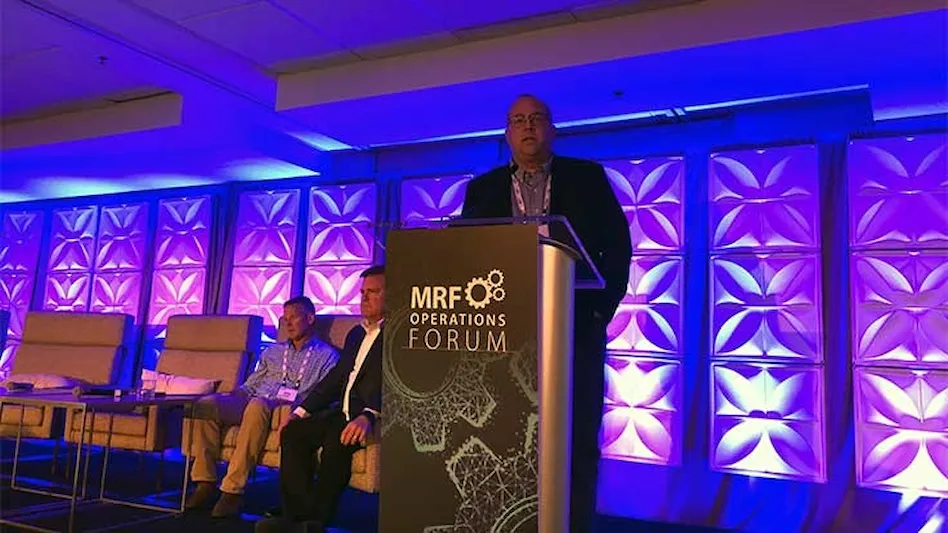
Megan Smalley
As technology improves, more material recovery facility (MRF) operators are beginning to incorporate robotics and artificial intelligence (AI) tools into their operations.
During the MRF Operations Forum on Oct. 22 in Chicago, Scott Jable, North American recycling and waste market manager at Steinert, which is headquartered in Germany, led a panel discussion with John Hansen, co-owner of Single Stream Recyclers, Sarasota, Florida, and Matt Herman, business and public relations manager at Randy’s Environmental Services, Delano, Minnesota, to learn why these two companies added robotics at their facilities. Hansen and Herman shared reasons why they added robotics and some of the experiences they have had using this technology.
Single Stream Recyclers
Florida-based Single Stream Recyclers has added 14 AMP Robotics units at the facility. Hansen said he uses these robots in quality control positions and sorting positions on fiber lines. Hansen said the robots are extremely helpful in reducing the need for manual labor.
“With unemployment rates the way they are, getting someone on the line is tough,” Hansen said. He added that fiber lines are especially difficult to staff, but he said the company has added four of its 14 robots onto fiber lines in the last month to help alleviate labor concerns.
The robots working on Single Stream Recyclers’ container lines typically achieve 70 to 80 picks per minute, Hansen said. He added that the robots on the fiber line haven’t quite hit that pick rate yet but he said he anticipates that “those will get to the same pick rate as [the robots on the] container lines shortly.”
Although robotics are not perfect and miss some objects they need to pick, Hansen said the overall end product is typically better than what is achieved with a manual sort line. He noted that robots also achieve about 80 picks per minute compared with manual sorters who can pick about 40 picks per minute.
Another benefit to the technology is the ability to perform composition analysis. Hansen said he hopes to be able to look closer at the robot’s vision system to track data on the type of material coming in and out of the MRF, which ultimately will help with selling materials to end markets.
He added that the robots require some maintenance with checking the wear and tear on the grippers of the robotic arms. He said the company has new grippers ready to go in case any need to be replaced.
Randy’s Environmental Services
Minnesota-based Randy’s Environmental Services added a Waste Robotics Inc. unit about two years ago to pull source-separated organics in a blue-bag program. He said residents put source-separated organics in a blue bag, and when those bags are dumped at a transfer station and loads go through, the robots identify and pull the bags out.
Herman said using robotics to sort the organics is much safer than having humans perform that job. “Robots won’t get stuck by a needle,” he said. “They won’t get hurt. It’s a safer and more efficient operation.”
When Randy’s Environmental Services installed the unit, Herman said it took the robot a training period of about two weeks to get to the desired speed.
“[With] initial training, you show [the robotics] enough of what you want it to see,” he said. “That doesn’t end after two weeks—you do some other maintenance,” but he added that the training period isn’t very arduous.
To maintain the robot, Herman said the company will regularly wipe down lenses and it has only had to complete one camera and light bar cleaning in the two years it has owned the machine.
Herman noted that Randy’s Environmental Services had some space limitations when it installed the Waste Robotics unit a few years ago, so material being fed into the system falls right in front of the robot’s eyes and brain and material clumps a little bit.
“Designing the feed system is important,” Herman said. “We did the best we could; the machine does a good job with what it’s presented.”